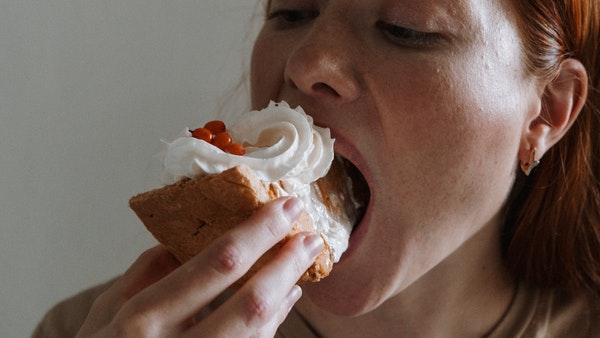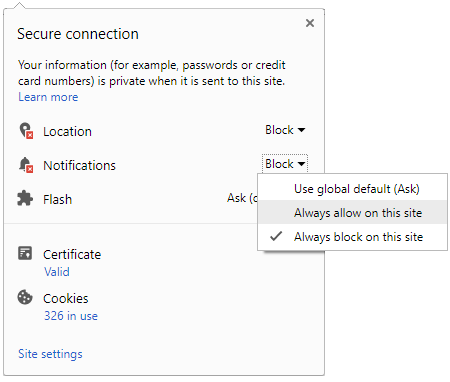Just In
- 6 hrs ago

- 7 hrs ago

- 10 hrs ago

- 10 hrs ago

Don't Miss
- Finance
 IndusInd Bank Q4 Results: PAT Soars 15% To Rs 2,349 Cr, NII Climbs 15%; 165% Dividend Declared
IndusInd Bank Q4 Results: PAT Soars 15% To Rs 2,349 Cr, NII Climbs 15%; 165% Dividend Declared - Movies
 Dance Deewane 4: Madhuri Dixit, Suniel Shetty, Karisma Kapoor Dance On Chak Dhoom Dhoom With Chikoo, Bunty- PI
Dance Deewane 4: Madhuri Dixit, Suniel Shetty, Karisma Kapoor Dance On Chak Dhoom Dhoom With Chikoo, Bunty- PI - News
 Who Is Lisa Pisano, New Jersey Woman Gets Pig Kidney Transplant And Heart Pump?
Who Is Lisa Pisano, New Jersey Woman Gets Pig Kidney Transplant And Heart Pump? - Sports
 Pakistan vs New Zealand 4th T20 Live Score, Latest Updates From Lahore: Tom Blundell, Tim Robinson Open NZ Innings
Pakistan vs New Zealand 4th T20 Live Score, Latest Updates From Lahore: Tom Blundell, Tim Robinson Open NZ Innings - Automobiles
 Royal Enfield Unveils Revolutionary Rentals & Tours Service: Check Out All Details Here
Royal Enfield Unveils Revolutionary Rentals & Tours Service: Check Out All Details Here - Technology
 Elon Musk’s X Is Launching a TV App Similar to YouTube for Watching Videos
Elon Musk’s X Is Launching a TV App Similar to YouTube for Watching Videos - Education
 AICTE introduces career portal for 3 million students, offering fully-sponsored trip to Silicon Valley
AICTE introduces career portal for 3 million students, offering fully-sponsored trip to Silicon Valley - Travel
 Escape to Kalimpong, Gangtok, and Darjeeling with IRCTC's Tour Package; Check Itinerary
Escape to Kalimpong, Gangtok, and Darjeeling with IRCTC's Tour Package; Check Itinerary
What Are Empty Calories? Major Sources, Disadvantages And How To Replace Them
Empty calories are defined as the sum of calories that come from solid fats and added sugars. They are sources of energy with no nutritional value. Foods such as soda, dairy desserts, fruit drinks, pizza, whole milk and grain dessert contain empty calories.

According to a study, around 40 per cent of total calories consumed by children aged 2-18 years come from empty calories. [1] The consumption of empty calories has exceeded the discretionary calorie allowance (which ranges from 8 to19 per cent) in people of all age groups. [2]

Solid fats in empty calories are primarily made up of saturated and trans fats, both of which have been linked to an increased risk of heart disease. Added sugars are caloric sweeteners that are added to foods during processing. They do not include natural sugars, which are found in fruit and milk. These sugar types increase calorie intake and may lead to conditions like overweight, diabetes and heart conditions. [3]
Major Sources Of Empty Calories
Some of the major sources of empty calories include:
- Cakes
- Doughnuts
- Cookies
- Muffins
- Sausages
- Granola bars
- Soda
- Fruit juice
- Soybean
- Energy Drinks
- Burger
- Canola Oil
- French fries
- Candy bars
- Hard candies
- Ice cream
- Butter
- Ketchup
- Pizza
- Milkshake
- Wraps
- BBQ sauce
- Alcohol

Empty Calories In Men And Women
According to the snacking analysis by the United States Department of Agriculture (USDA), snacks provide around one-third of all daily calories (32 per cent for women and 31 per cent for men) in the form of empty calories. [4]
The reports say that the average daily intake of empty calories for men aged 20 and over was 923 calories, and for women of the same age group was 624 calories.
Meaning, both men and women, on average, consume empty calories two to three times more than their daily limit of solid fats and added sugars.
Empty Calories In Children
A study has found that children aged between 2-18 years old in the US consume a higher proportion of total energy (4.3 per cent) from soda and 6.5 per cent from other sugar-rich beverages. The lower proportion was from milk (7.1 per cent).
What's the Alternative?
Some of the major sources of empty calories like soda solely contain added sugars, however, others like grain desserts contain some amounts of nutrients like fibre. Also, whole milk, which also comes under the category of empty calories food, are packed with calcium and vitamin D, along with solid fast.
The best way is to include empty calories in the diet but in small amounts as they are sources of energy and also the body requires them. Reformulation of certain foods like pizza is also suggested to reduce their calories and make them nutritional.
Combining empty calories along with healthy proteins can also help keep the person fuller and make their snaking time enjoyable.
One can also substitute certain foods with healthy choices. For example, regular meat products can be substituted with lean meat products, flavoured cereals with plain oatmeal, fried chicken with baked ones and processed oils with healthy oils like extra virgin olive oil.

Candies, cakes, doughnuts and cookies can be replaced with peanut butter and fresh fruits during snack time.
Disadvantages Of Empty Calories
Empty calories are often consumed unknowingly as they are good to taste. This leads to overeating and risk of diseases like obesity, high cholesterol, diabetes and inflammation.
Foods rich in empty calories also tend to increase hunger as they are digested easily by the body. This again leads to overeating and the risk of the aforementioned diseases.

How To Identify Empty Calorie Products?
Most market-based products do not have labels for empty calories.
However, one can look for terms such as "no sugar added," "low fat," or "a low-calorie food." Products with these labels adhere to strict guidelines with no special processing, alteration, or reformulation.
To Conclude
Empty calories can easily push a person over their daily calorie limit. Experts suggest watching out for the ingredients in the products before buying them.
-
 healthBangalore Loves Its Bakery Cakes 'n Biscuits: But How Bad Is It? Experts Warn About Obesity!
healthBangalore Loves Its Bakery Cakes 'n Biscuits: But How Bad Is It? Experts Warn About Obesity! -
 healthThis Social Issue Could Be The Next ‘Epidemic,’ It Is Worse Than Smoking 15 Cigarettes A Day
healthThis Social Issue Could Be The Next ‘Epidemic,’ It Is Worse Than Smoking 15 Cigarettes A Day -
 pregnancy parentingObesity And Depression: 5 Ways You Can Support Your Kid
pregnancy parentingObesity And Depression: 5 Ways You Can Support Your Kid -
 healthHigh Risk! How Processed Foods are Imperiling Your Heart
healthHigh Risk! How Processed Foods are Imperiling Your Heart -
 healthParenting Tips: 5 Health Risks Of Eating Newspaper-Wrapped Snacks Regularly In Children
healthParenting Tips: 5 Health Risks Of Eating Newspaper-Wrapped Snacks Regularly In Children -
 pregnancy parentingBoosting Wellness: How Regular Physical Activity Can Transform The Lives Of Indian Teens
pregnancy parentingBoosting Wellness: How Regular Physical Activity Can Transform The Lives Of Indian Teens -
 healthFrom Stamina To Happiness: Exploring The Multiple Benefits Of Regular Exercise
healthFrom Stamina To Happiness: Exploring The Multiple Benefits Of Regular Exercise -
 healthGST Council Meet: Would Reducing The Cost Of Theatre Foods Trigger Obesity?
healthGST Council Meet: Would Reducing The Cost Of Theatre Foods Trigger Obesity? -
 wellnessWhat Is Cellulite? Foods That Cause Cellulite
wellnessWhat Is Cellulite? Foods That Cause Cellulite -
 prenatalObesity And Fertility: Can You Get Pregnant When Overweight? How Does It Affect Men And Women?
prenatalObesity And Fertility: Can You Get Pregnant When Overweight? How Does It Affect Men And Women? -
 kidsObesity And Child's Brain: How Badly Does It Affect The Brain Health?
kidsObesity And Child's Brain: How Badly Does It Affect The Brain Health? -
 nutritionCan Eating A High Protein Breakfast Help Prevent Overeating?
nutritionCan Eating A High Protein Breakfast Help Prevent Overeating?


 Click it and Unblock the Notifications
Click it and Unblock the Notifications



